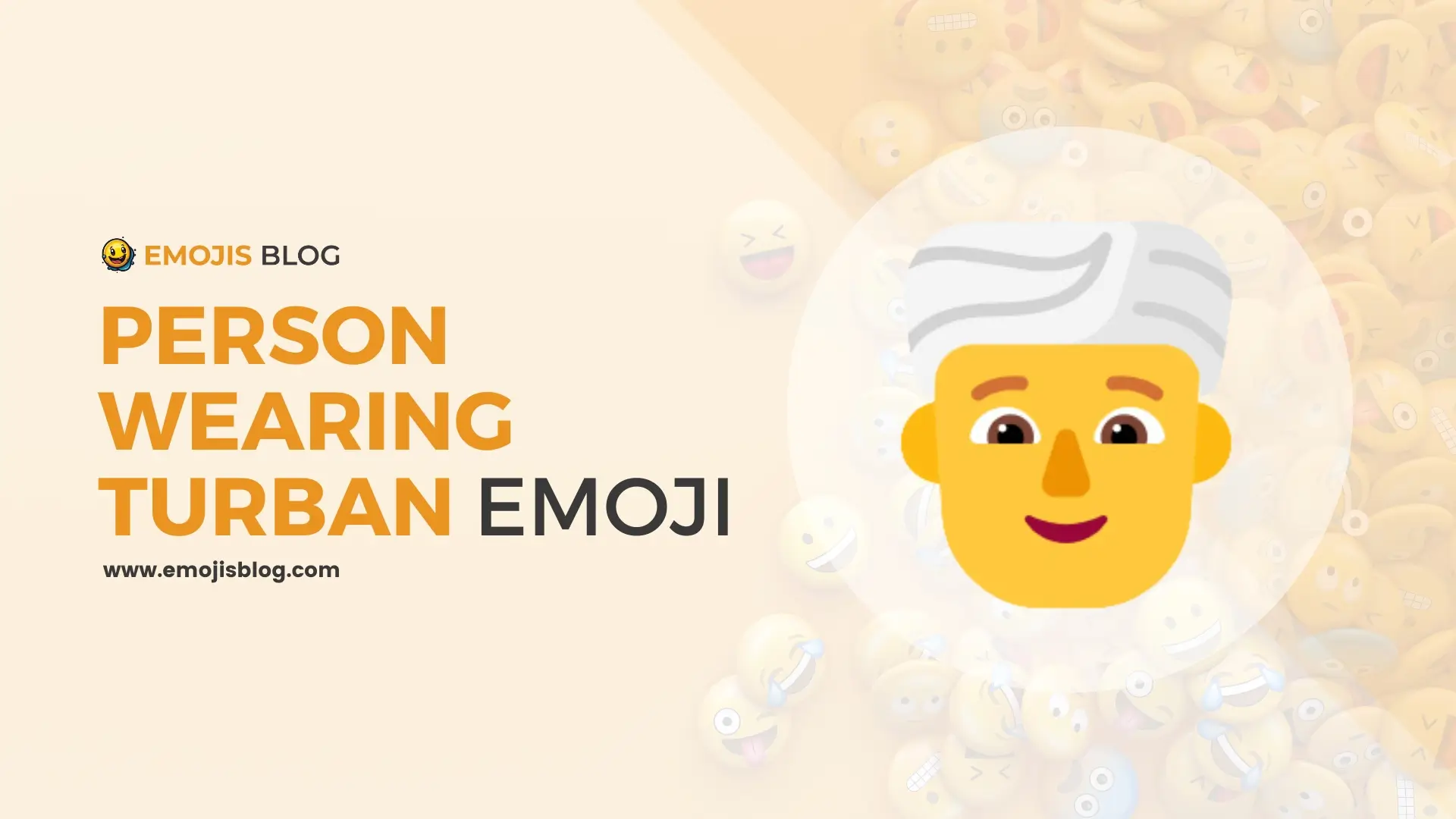What Does The Person Wearing Turban Emoji Mean 👳
👳
What Does The Person Wearing Turban Emoji Meanings 👳
The person wearing turban emoji (👳) depicts an individual with a wrapped turban on their head, symbolizing cultural, religious, and traditional significance. Commonly associated with Sikhism, where the turban (dastar or pagri) represents faith, identity, and honor, it also reflects traditional headwear worn in parts of South Asia, the Middle East, and North Africa for various reasons, including protection and social status. This emoji is used in digital communication to represent cultural diversity, religious discussions, traditional attire, and personal identity, emphasizing respect and awareness of its profound cultural implications.
Technical Information
| Attribute | Description |
|---|---|
| Unicode | U+1F473 |
| Unicode Name | Man with Turban |
| Shortcodes | :person_with_turban:, :man_with_turban: |
| Introduced | Unicode 6.0 (2010) |
| Emoji Version | 1.0 |
| Category | People & Body |
| Subcategory | Person Role |
| Gender Variants | Man with Turban (👳♂️), Woman with Turban (👳♀️) |
| Skin Tones | Available in various skin tones |
| Platforms | Available on major platforms such as Apple, Google, Samsung, Microsoft, Twitter, Facebook, and WhatsApp |
| Presentation | Typically depicted as a person with a wrapped turban on their head; slight design variations across platforms |
What Does The Person Wearing Turban Emoji Mean 👳
Emojis have become an integral part of digital communication, helping to convey emotions, expressions, and concepts in a simple, visual format. One such emoji that often piques curiosity is the person wearing a turban emoji (👳). This article delves into the meaning, usage, and cultural significance of the person wearing turban emoji, exploring its various contexts and implications.
Historical and Cultural Background
Origin of the Turban
The turban, a headwear consisting of cloth wrapped around the head, has a rich history and cultural significance. It is worn in many parts of the world, including South Asia, the Middle East, and North Africa. The turban serves various purposes: it can signify religious affiliation, social status, or be used for practical reasons like protection from the sun and sand.
Significance in Different Cultures
- Sikhism: In Sikhism, the turban, known as the “dastar” or “pagri,” holds immense religious significance. It represents faith, honor, and self-respect. Sikhs wear the turban as a sign of their commitment to their faith and as a marker of their identity.
- Middle Eastern and North African Cultures: In these regions, the turban is often worn by men as a traditional head covering. It can symbolize wisdom, dignity, and sometimes, scholarly status.
- South Asia: In countries like India, the turban is a common traditional headwear. It varies in style and significance depending on the region and community. For instance, in Rajasthan, turbans are colorful and elaborate, often indicating the wearer’s region or caste.
The Person Wearing Turban Emoji (👳)
Design and Variants
The person wearing turban emoji (👳) typically depicts a person with a wrapped turban on their head. The design varies slightly across different platforms, but the core elements remain consistent. Some platforms also offer gender variants, such as a man wearing a turban and a woman wearing a turban.
Meaning and Usage
The person wearing turban emoji can convey various meanings, depending on the context in which it is used:
- Cultural Representation: It can represent people from cultures where turban-wearing is common. This can be used to celebrate diversity and acknowledge cultural practices.
- Religious Significance: It can symbolize the Sikh religion or other religious traditions where turbans are worn.
- Fashion and Tradition: It may also be used to highlight traditional attire or discuss topics related to cultural fashion.
- Personal Identity: For individuals who wear turbans, this emoji can serve as a personal identifier, representing their own cultural or religious identity.
Common Contexts of Use
- Cultural Celebrations: During festivals or cultural events, people might use this emoji to celebrate and share their traditions.
- Religious Conversations: In discussions about Sikhism or other religions where turban-wearing is prevalent, this emoji can be a respectful and meaningful addition.
- Fashion Statements: When talking about traditional or cultural fashion, the turban emoji can illustrate the conversation.
Sensitivity and Misuse
Respectful Use
It is important to use the person wearing turban emoji with respect and awareness of its cultural significance. This emoji is more than just a piece of headwear; it represents deep cultural and religious meanings for many people.
Avoiding Stereotypes
Users should avoid using the emoji in a way that perpetuates stereotypes or mocks cultural practices. Sensitivity to the diverse meanings attached to the turban is crucial in maintaining respect and understanding.
Conclusion
The person wearing turban emoji (👳) is a powerful symbol that represents a range of cultural and religious identities. Its usage in digital communication can help promote awareness and appreciation of different traditions. By understanding the historical and cultural contexts of the turban, users can employ this emoji thoughtfully and respectfully, contributing to a richer and more inclusive online discourse.

